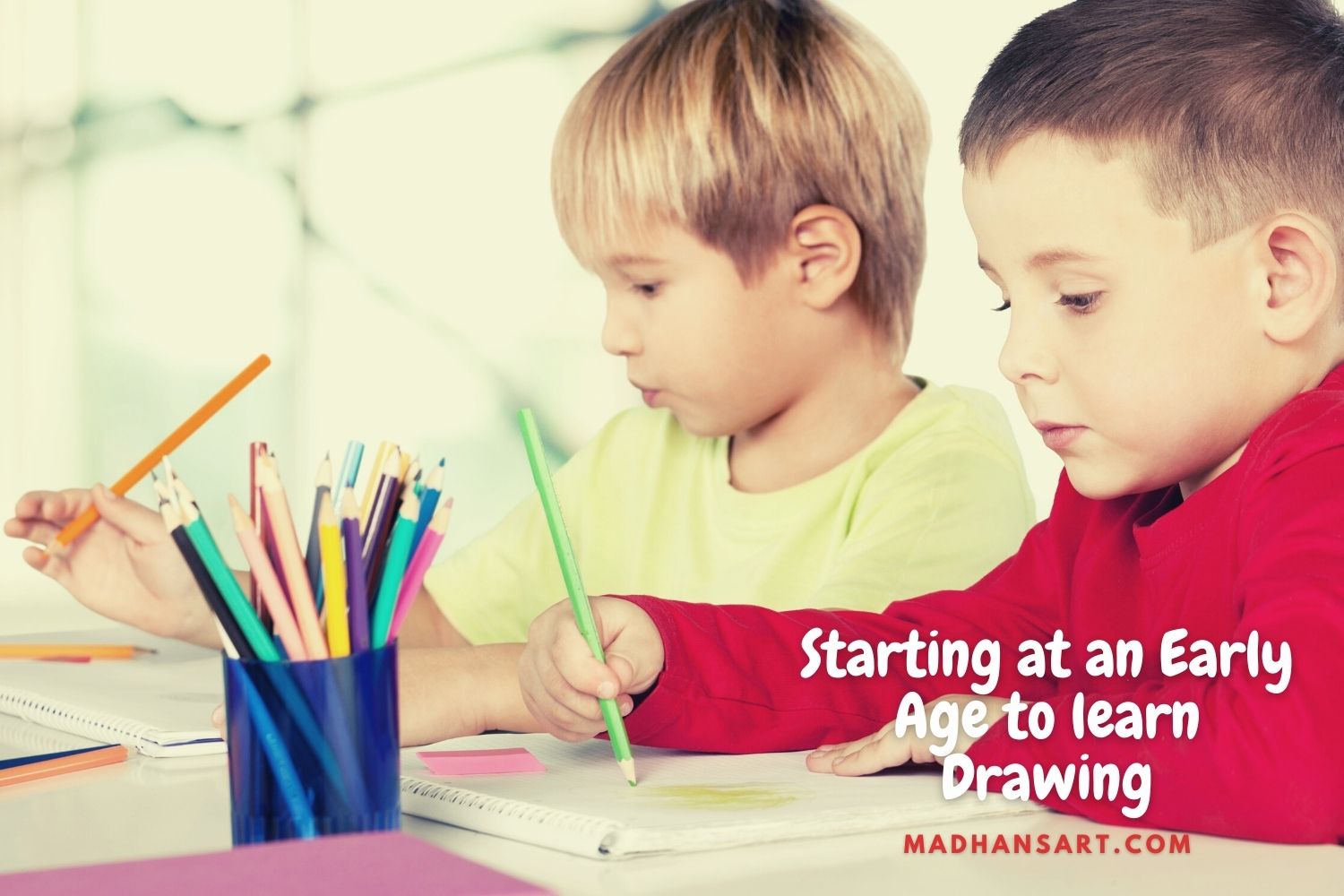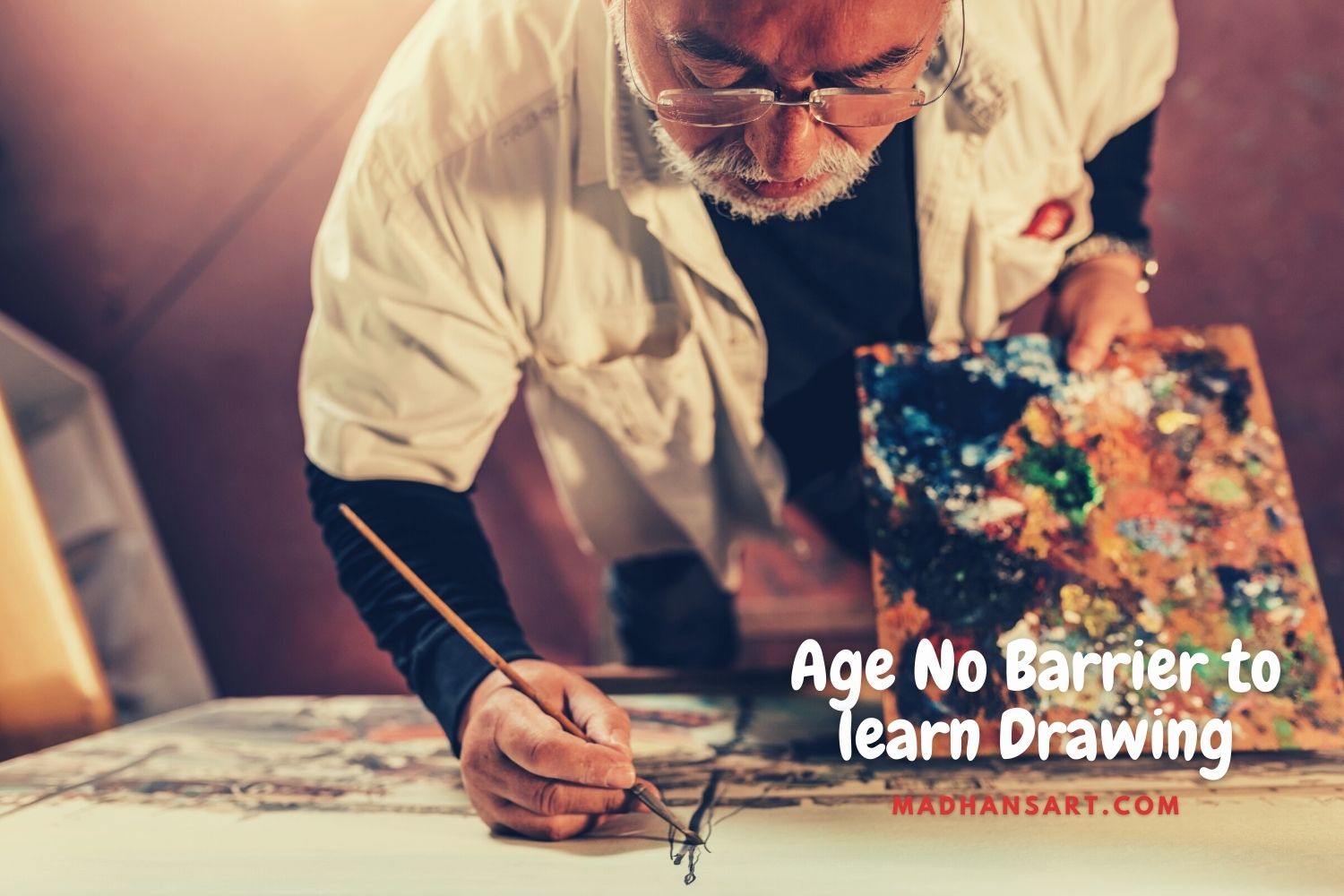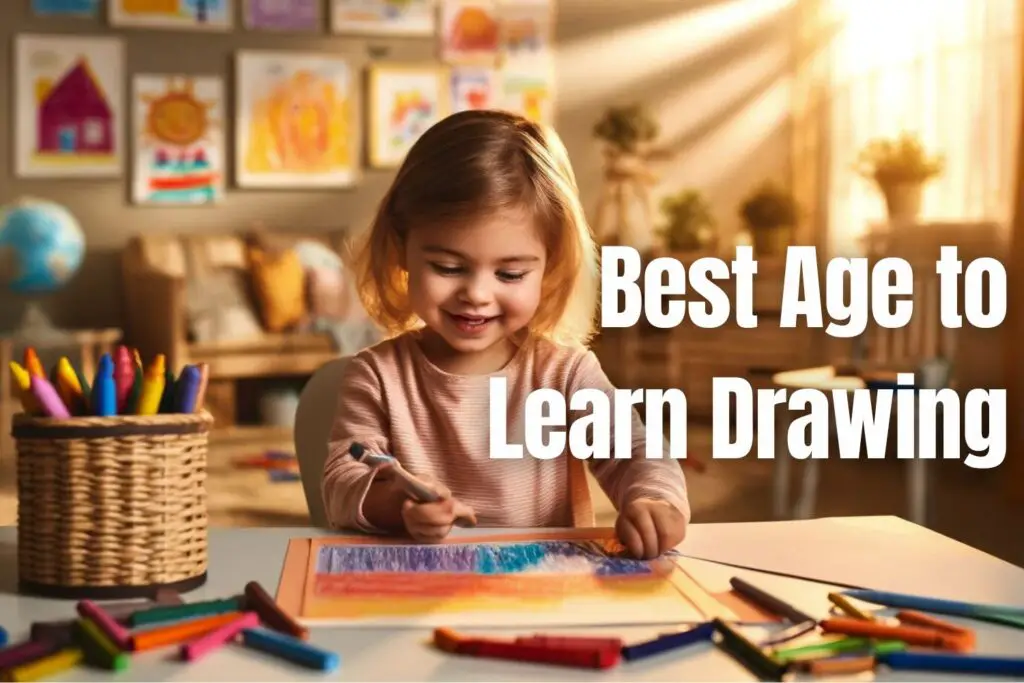The fact is, there is no single “best” age to start learning how to draw. With the right mindset, resources, and dedication, anyone can begin their artistic journey at any stage of life and develop their skills.
Various studies have demonstrated that while children may start drawing naturally as a form of expression, adults can also develop drawing skills with practice and the right mindset. The development of drawing skills is not limited by age. This can be developed with dedication and appropriate resources, and anyone can improve their artistic abilities. (Psychology Today).
Whether you’re a curious toddler, a passionate teen, or an adult looking for a new creative outlet, embracing the world of art is always a worthwhile endeavor.
Table of Contents
Is there a ‘perfect’ age to start drawing?
There is no ‘perfect’ age to start drawing. Drawing development can begin at a young age with simple sketches and scribbles. Exposing children to making art from an early age fosters creativity and encourages exploration.
However, starting later in life doesn’t preclude one from becoming a good artist. With dedication and practice, anyone can improve their drawing skills and become good at drawing. The key is to start wherever you are and embrace the journey. Let’s now see if there are any advantages to learning art at a young age.
Do young children have an advantage in learning to draw?
Yes, Young children do have an advantage in learning to draw. They often approach drawing with unbridled enthusiasm and curiosity, free from self-judgment and societal expectations. They fearlessly express themselves through scribbles, lines, and vibrant colors.
This early exposure to art can lay a strong foundation for future artistic development, nurturing children’s imagination and encouraging them to explore different forms of self-expression. So, let’s next talk about adults.
Can adults learn drawing effectively?
Contrary to popular belief, adults can learn drawing just as effectively as children. While children may have the advantage of uninhibited creativity, adults bring a wealth of life experiences, patience, and focus to the learning process.
With the right guidance and dedication, adults can make remarkable progress in their artistic skills, often excelling in areas such as perspective, shading, and composition.
What are the developmental stages in drawing?
The following are the different developmental stages in the learning drawing process:

- Random Scribbling (15-18 months): Children start making marks on paper as soon as they can hold a pencil, developing their fine motor skills.
- Controlled Scribbling (2-3 years): As children gain more control over their movements, they create recognizable shapes like circles and dots.
- Lines and Patterns (2½-3½ years): Children begin to draw lines and simple patterns, expressing their creativity and exploring their ability to draw.
- Pictorial Stage (3-5 years): Recognizable objects and people emerge in drawings, often with exaggerated features or missing body parts.
- Landscape Drawing (5-8 years): Children start to include baseline, sky, and background elements in their drawings.
- Realism (9-11 years): Drawings become more proportional and detailed, reflecting a growing awareness of perspective and shading.
It’s never too late to learn or nurture a passion for drawing, as it develops fundamental skills alongside writing and social skills.
How Do Toddlers and Preschoolers Scribble and Draw?
Toddlers and preschoolers typically begin their artistic journey with scribbling. These seemingly random marks are actually an essential stage of development, helping children develop their fine motor skills and hand-eye coordination. As they grow, their scribbles evolve into more intentional shapes and forms, such as circles and stick figures, reflecting their growing understanding of the world around them.
What are the benefits of early art exposure for a child to draw?
Early exposure to art offers numerous benefits for a child’s development, and they are as follows:-
- Develops fine motor skills and hand-eye coordination
- Encourages self-expression and creativity
- Enhances problem-solving abilities and critical thinking
- Boosts self-esteem and confidence
- It provides a healthy outlet for emotions and stress relief
- Supports cognitive development and visual learning
- Lays the foundation for future artistic pursuits and passions
What are the challenges faced by people of different ages when learning drawing?
Learning a new skill will always have challenges, and here are the challenges at different ages when learning drawing:
- Toddlers (1-3 years): Short attention span, limited fine motor skills, and difficulty holding a pen or pencil properly.
- Preschoolers (3-5 years): Frustration when drawings don’t look like the real things they are trying to represent, as their skills are still developing.
- School-age children (6-11 years): Comparing their work to others and becoming discouraged when they feel they don’t draw as well as their peers.
- Preteens and teens (12-18 years): Self-criticism and fear of judgment from others can lead to a loss of interest in drawing when not addressed.
- Adults: Overcoming the belief that drawing skills are inborn and cannot be improved and finding time to practice deliberately amidst busy schedules.
You have to be patient and practice continuously; anyone can learn and improve their drawing skills at any age. It’s never too late to start and enjoy drawing for a whole life!
How do I help Adults overcome artistic blocks?

Adults often face unique challenges when learning to draw, such as self-doubt and the fear of failure. To help them overcome these artistic blocks, encourage them to embrace imperfection and view mistakes as opportunities for growth.
You must provide them with resources and exercises that break down complex techniques into manageable steps and celebrate their progress along the way.
What is the impact of art coaching for various ages?
Art coaching creates some impact for all, and here’s how it can impact various ages:
- Toddlers and preschoolers:
- It helps them reach milestones like learning to hold a pencil and making basic shapes
- Encourages exploration and creativity through fun, age-appropriate activities
- School-age children:
- Provides useful tips and techniques to improve their skills and draw better
- Boosts confidence by helping them create drawings they’re proud of
- Supports the development of fine motor skills, aiding in drawing and writing
- Teens and adults:
- Offers guidance and support for those who want to draw but don’t know where to start
- Helps overcome mental blocks and self-doubt, encouraging them to keep practicing
- Introduces new techniques and mediums to expand their artistic horizons
- Seniors:
- It provides an engaging way to learn something new and maintain cognitive function
- Offers a creative outlet for self-expression and stress relief
- Creates opportunities for socialization and connection with others through shared interests
Art coaching can help individuals at any age improve their skills, gain confidence, and discover the joy of creating art.
What classes are suitable for children to draw and use color?
Art classes for children should always focus on fostering creativity and exploration. You should look for classes that offer different mediums and techniques, such as drawing with pencils and crayons, painting with watercolors or acrylics, and experimenting with mixed media.
You should ensure that the classes are age-appropriate and led by experienced art educators who can provide guidance and encouragement.
How do I support artistic development at home with scribbling and doodling?
Supporting your child’s artistic development at home is crucial for nurturing their creativity. Provide them with a dedicated space for art, stocked with a variety of materials such as paper, crayons, markers, and paints.
Encourage them to scribble and doodle freely and show genuine interest in their creations. Display their artwork proudly and engage them in conversations about their artistic process and inspiration.
How do some factors influence the best age for learning to draw?
Various factors influence the age at which one learns drawing, but the key is to start early and practice consistently. Exposing children to color early on nurtures their creativity and encourages self-expression, setting the stage for future artistic growth.
Young artists should grasp basic principles of proportion, such as the relationships between shapes and sizes, to create more realistic drawings. Adults can benefit from learning to draw, as it helps overcome artistic blocks by promoting problem-solving skills and boosting self-confidence.
Beginners of all ages can start with user-friendly mediums like pencils, markers, or paints, depending on their preferences and comfort levels. For young artists, developing a portfolio is crucial, as it allows them to showcase their skills, monitor their progress, and open doors to new opportunities in the art world.
How does early exposure to color influence a child’s drawing development?
Early exposure to color in art greatly influences a child’s drawing development by nurturing their creativity, encouraging self-expression, and helping them understand the world around them. It enhances their visual perception, color recognition, and fine motor skills, setting the foundation for future artistic growth and experimentation.
What are the principles of proportion that young artists should learn?
Young artists should learn the principles of proportion, such as the relationships between shapes, sizes, and the relative distances between elements within a drawing. Understanding proportion helps create more realistic and balanced compositions, enhancing the overall quality and visual impact of their artwork.
Can learning to draw help self-esteem and creativity?
Yes, learning to draw can significantly boost self-esteem and creativity. Drawing provides a sense of accomplishment, which enhances self-confidence. It also encourages individuals to express themselves uniquely, fostering creative thinking and problem-solving skills.
By exploring various techniques and styles, people can discover new ways to communicate their ideas and emotions through art.
What art mediums are best for beginners of different ages?
The best art mediums for beginners depend on their age and preferences. Children can start with crayons, markers, or finger paints, while older beginners may prefer pencils, charcoal, or watercolors. The key is to choose user-friendly mediums that allow for experimentation and provide a satisfying artistic experience.
How does developing a portfolio benefit young artists?
Developing an art portfolio benefits young artists by providing a tangible record of their artistic journey. It allows them to showcase their skills, demonstrate their progress, and reflect on their growth. Portfolios will open doors to new opportunities, such as art school admissions, scholarships, and exhibitions.
Conclusion
Learning art is a lifelong journey that can begin at any age. Whether you’re nurturing a young child’s creativity or embarking on your artistic path as an adult, the key is to approach drawing with curiosity, patience, and a willingness to learn. By providing the right resources, support, and encouragement, anyone can unlock their artistic potential and experience the joy of creating.
So, grab a pencil and some paper, and let your artistic journey begin. Remember, it’s never too early or too late to start exploring the wondrous world of drawing and unleashing your inner artist.
Frequently Asked Questions
-
Can a talent like drawing fade away with age?
Talents do not fade away with age but will fade away if you do not use them. Therefore, it is essential to keep practicing your drawing skills, even if you are not as good as you used to be. By doing so, you can maintain your talent and improve your skills.
-
What are the benefits of learning to draw at an early age?
Some benefits of learning to draw at an early age include improved fine motor skills, increased concentration and focus, and enhanced problem-solving skills. Drawing can also be a fun and relaxing activity for children.
-
What are the benefits of learning to draw later in life?
Some benefits of learning to draw later in life include increased confidence, improved mood and mental well-being, and a greater art appreciation. Drawing can also be a fun and relaxing activity for adults.
-
At what age is it too late to start drawing?
It is never too late to start drawing. Regardless of your age, you can learn how to draw. However, it is essential to be passionate and patient and keep practicing, even if you make mistakes. With time and practice, you will improve.
-
At what age do children start drawing?
Most children start drawing between the ages of 2 and 4. However, some children may start earlier or later than this. Some children may also show an interest in art before drawing by pointing at objects or looking at books with pictures.

